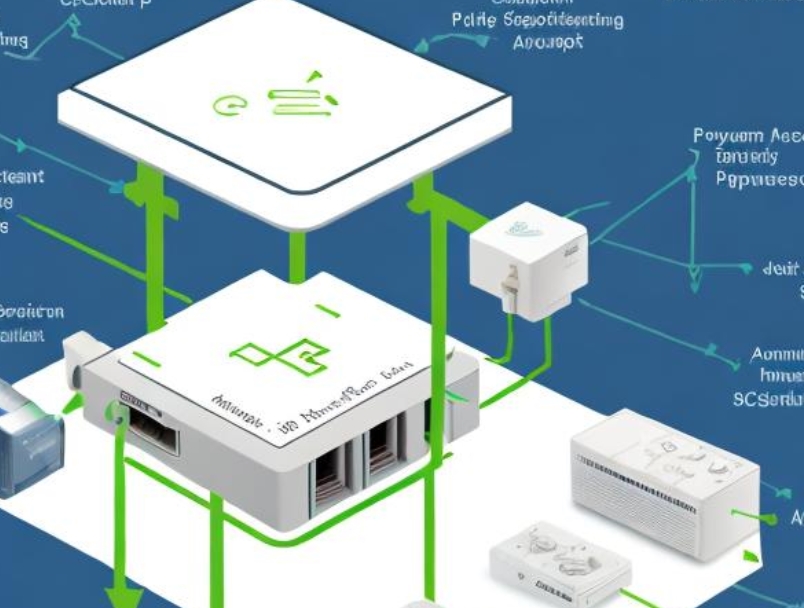
IoT is transforming smart homes into intelligent, connected spaces. Discover how the Internet of Things is enhancing convenience, efficiency, and security in modern living.
Enhanced Connectivity
IoT enables seamless connectivity between different smart devices, creating a cohesive ecosystem within the home. This connectivity allows for:
- Unified Control: Homeowners can manage multiple devices, such as lights, thermostats, security systems, and appliances, from a single interface, usually via a smartphone or voice-activated assistant.
- Interoperability: Devices from different manufacturers can communicate and work together, providing a more integrated and user-friendly experience.
Energy Efficiency
Smart homes equipped with IoT technology can significantly improve energy efficiency, leading to cost savings and a reduced environmental footprint. Key features include:
- Smart Thermostats: These devices learn homeowners' schedules and preferences to optimize heating and cooling, reducing energy consumption.
- Automated Lighting: IoT-connected lights can adjust based on occupancy, natural light levels, and time of day, minimizing unnecessary energy use.
- Energy Monitoring: IoT sensors can track energy usage in real-time, providing insights and recommendations for reducing consumption.
Security and Safety
IoT technology enhances home security and safety by enabling advanced monitoring and automation. Innovations in this area include:
- Smart Locks: These allow homeowners to lock and unlock doors remotely, grant temporary access to guests, and receive notifications of any activity.
- Surveillance Systems: IoT-enabled cameras and sensors provide real-time video feeds, motion detection, and alerts, enhancing home security.
- Safety Sensors: Devices such as smoke detectors, carbon monoxide detectors, and water leak sensors can alert homeowners to potential dangers, even when they're away.
Convenience and Comfort
Smart homes offer a higher level of convenience and comfort through IoT technology. Some notable advancements are:
- Voice Assistants: Devices like Amazon Alexa, Google Assistant, and Apple Siri allow homeowners to control various smart devices using voice commands, making everyday tasks easier.
- Automated Routines: Homeowners can set up routines that automate multiple actions based on specific triggers, such as turning off lights and adjusting the thermostat when leaving the house.
- Personalization: IoT devices can learn user preferences and habits, customizing the home environment to suit individual needs and preferences.
Future Trends
The impact of IoT on smart homes is expected to grow even further as technology continues to evolve. Future trends may include:
- Artificial Intelligence (AI): Integration of AI with IoT will enable more advanced automation and predictive capabilities, enhancing the smart home experience.
- 5G Connectivity: The rollout of 5G networks will provide faster, more reliable connections for IoT devices, improving performance and enabling new applications.
- Health Monitoring: IoT devices will increasingly monitor health and wellness, tracking vital signs, activity levels, and sleep patterns to provide personalized health insights.
Conclusion
The IoT is transforming smart homes into interconnected, efficient, and convenient living spaces. By enhancing connectivity, improving energy efficiency, bolstering security, and offering greater convenience, IoT technology is redefining modern living. As advancements continue, smart homes will become even more intelligent and responsive, offering new possibilities for comfort, sustainability, and peace of mind.
Embracing IoT in smart homes represents a significant step towards a more connected and efficient future, where technology seamlessly integrates into our daily lives, enhancing our overall quality of life.
american-boffin.com
bfbchamp.com
democraticcoma.com
tigrepelvar.com
charpoles.com
derbywheelblazers.com
fansfocus.net
guildnow.com
hediyeteyze.com
isprimecdn.com
kiira-korpi.net
manutd24.com
mediumtylerhenry.com
mishanghai.org
savethreestrikes.com
smilesbydavis.com
10puntos.net
band-shirt.com
icelandtrails.com
paulmarioday.com
thefunnynanny.com
Dave Tries Ballet
Buon Grande
Criacao Sites
Perry Perkins Books
Writing Essay in AU
Ka Soku
Blood is Blood Movie
Eleanor Writes Things
The Happy Prince Beirut
Town of Witless Bay
Online Igrovoi Club
Trigeminal Neuralgia - Ronald Brisman MD
Chocolate City Burlesque
Advanced Electric Scooters
W Tougei
Breadboard Maniac
Takasu App



